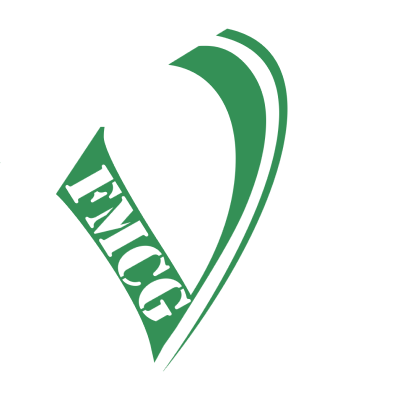Digital Transformation is the application of digital technology into all aspects of your business. It fundamentally transforms how your organisation creates and delivers values to your customers.
Despite the hype about Digital Transformation, most companies are still in the very early phases of digitalisation. According to a 2016 report from analyst firm Forrester, only 11 per cent of companies surveyed are digitally mature. Failed or cancelled digital projects are commonplace and have cost companies dearly.
With this 7-step road map to Digital Transformation, you should be able to start the digitalisation journey right away.
Digital Transformation should be driven by an organisation-wide effort. Therefore, the buck stops with the CEO.
The CEO alone, however, cannot lead the charge. The execution of Digital Transformation needs buy-in and commitment from other members of the C-suite.
As technology is increasingly commoditised, it’s the strategy, not technology, that will determine whether your Digital Transformation is a success.
Before a digital strategy is set, it is crucial to conduct a strategic review of the industry. It should be able to spot new business models that are potentially disruptive.
Regardless of the scope of your digital strategy, don’t forget to look beyond your industry for breakthrough ideas. Disruptions can come from unexpected directions.
Building your own digital capabilities does not have to be prohibitively expensive, especially for small and mid-sized enterprises. Digital disruptions are levelling the playing field. Companies, regardless of their sizes, now belong to interconnected ecosystems, and can access the same on-demand, inexpensive capabilities and resources. And when your business can find its place in these ecosystems, the possibilities are endless.
The digital vision and strategy then need to be sold to employees and other key stakeholders. Companies can also utilise other familiar tools, corporate vision and mission statements, and come up with their digital vision and mission statements.
Rather than embark on an all-in, high-stakes digitalisation project, it would be best if you aimed for quick wins with lighthouse projects that can quickly yield payoffs to secure support from key stakeholders and maximise the overall transformation’s prospects for success.
In addition to digital technologies, the execution of a digital strategy requires the right people with the right skill sets. You can either bring new digital skills into the company via recruitment or focus on the development of current employees.
The last step will make sure the transformation will be moved from the margins to the mainstream of your business.
The building blocks of this new operating model are Digital Culture and cross-functional teams.
You can find more detailed information about these seven steps here.
Digital Transformation is a lot more than the adoption of new technologies. It is about fundamentally changing how an organisation operates. As such, the people and cultural aspects of Digital Transformation cannot be overlooked.
Additionally, Digital Transformation is as much finance-driven as it is technology-driven. The CFOs’ role and vision in the entire Digital journey are highly critical. A digital CFO will be responsible for the evaluation of the cost-effectiveness and adding value in the digital processes, thus, helps enlarge the organisation scale. Learn more about the role of the CFOs in Digital Transformation.
It is more critical now than ever to create a personalised experience for travellers to improve both their satisfaction and loyalty.
The reason for the Hospitality industry to offer personalisation is mainly due to guests today are constantly bombarded with information, deals, promotions from hotels, online travel agencies (OTAs), Airbnb and other similar sharing platforms.
Furthermore, tech giants Amazon, Google, and Netflix have pioneered the era of personalisation, making it the new normal for consumer service industries.
Young travellers today, specifically the Millennials, prefer a seamless travel experience from A to Z, made according to their preferences.
Approximately half of the global online hotel bookings are preceded by a click on a mobile device. Plus, 94% of travellers utilise whatever electronic devices in possession (mobile, tablet, computer) to plan for their trips.
What travellers want is convenience. It is inevitable for tables not to adopt a mobile-first, cloud-first approach.
But where to begin? Start with modernising your Property Management Software (PMS) as they are the backbone of hotel operations.
Modern PMS empowers the front office staff and the management to solve a wide array of issues, mainly:
IoT can make or break your "personalisation game,” differentiate your hotel from the competitors. Many hotels have already implemented some forms of IoT to centrally monitor guest rooms condition (temperature, HVAC systems, TVs, Wi-Fi).
IoT can also help hoteliers to reduce maintenance costs through predictive analytics to predict a time when equipment might experience issues or break down.
IoT can be applied to inventory management to help track and manage item by item via remote scanners or other high-tech devices, thus, freeing the hotel staff for other demanding tasks.
Hospitality operations typically create complex procedures as there are multiple parties involved. Since blockchain is encrypted, it removes the middleman in transactions, ensures data stays valid, uncorrupted.
There are various ways to apply blockchain into Hospitality beyond the so-called cryptocurrency.
For example, blockchain can solve the independent loyalty program problem by creating a multi-brand coalition partnership platform, an eco-system for instant and real-time view of customer purchases and activities.
Secondly, blockchain combines with IoT can elevate the customer experience, digging deeper into customer behaviour analysis, and equip hoteliers with insights for crucial decisions.
Lastly, blockchain can be applied in supply chain management to manage vendors, inventory, and payment more efficiently. And let's not forget smart contracts, one of the fundamental applications of blockchain which allow the automated verification of relevant business rules. Smart contracts help hotels to maintain the lowest price for a specific item in the order from all participating vendors/ suppliers.
Manufacturers are among those who stand to benefit the most from Digital Transformation. Emerging technologies open up new opportunities to reinvent the ways products are made and distributed to the market.
There are nine steps manufacturers need to take in their journey to digitalisation.
You can find more detailed information about these nine steps here.
The Samsung Cloud Print platform provides mobile cloud printing capabilities to office users and mobile workers. The application aims to take advantage of the current cloud services and mobile printing trend.
Samsung chose to partner with Amazon due to their extensive expertise in automating deployment and their selection of hybrid, robust cloud infrastructures that would bring substantial benefits for Samsung, faster application performance, auto-scaling, ability to self-serve, security… to name a few. All these could subsequently help Samsung in building high-performance design at an extensively lower overall cost.
Citrix Systems is a multinational software company that aims at virtualising applications, primarily focused on mobile workstyles of more than 130,000 organisations worldwide, including many in Fortune Global 500 enterprises.
Citrix faced a considerable data challenge that had taken them tons of time and loads of cumbersome, manual steps to analyse the acquired data amount.
In the past, Citrix had to compile hundreds of spreadsheets and wrangled them for analysis. The process took forever to finish, and by the time it was done, the data was already out of date.
The key differentiators that make Birst cloud BI stands were the ease of implementation, ease of maintenance, and data model manipulation.
“Birst was a game-changer for us. We went live in less than 90 days with minimal involvement from IT and planned to have 2000 users up and running shortly," said Fred Tiso, Citrix’s vice president.
Infor SunSystems 6.4, the latest update of the venerable accounting system, represents a quantum leap in enterprise software. The newest version is packed full of innovative capabilities, which can be the catalyst for your business’ digital transformation.
User productivity is Infor SunSystems 6.4's core focus, defined by several critical factors, i.e., user experience, collaboration, automated workflows, and access to supporting documents.
SunSystems 6.4 offers consumer-grade “look & feel,” an experience similar to what users enjoy when they are using consumer applications, such as mobile apps and social networks.
More important, SunSystems 6.4 now allows users to interact with others using functions, chat boxes, tags, buttons similar to popular social networks.
Document management also becomes an easy task with the latest update via Infor Document Management, an integral part of the underlying software operating system Infor OS.
Infor SunSystems 6.4 offers users access to Coleman AI, an artificial intelligence engine developed to automate and run things in the background for end-users.
Coleman AI can be activated using chat-based queries to process typical financial processes and inquiries.
Infor OS allows for seamless integration between your SunSystems and other applications from Infor or other third-party vendors. Users can work either on-premises, in the cloud, or both.
With this integration, Infor is capable of keeping track of all of the information in a secure so-called “data lake.” Hence, users can connect all enterprise data to an advanced analytics application or do enterprise search.
Cloud computing is no longer a passing trend; it is becoming more mainstream. Early adopters are starting to witness benefits that cloud-based applications and solution bring to their organisations. Many IT experts and accountants believe that the future is in the cloud.
Check out TRG's latest whitepaper, "The Next Big Things in Accounting Software," available for FREE DOWNLOAD to learn how cloud computing can automate, streamline, and thrive businesses today.
TRG provides us with high-level support and industry knowledge and experience. There are challenges and roadblocks but it's certainly a collaboration and partnership that will see us be successful at the end.

Archie Natividad Aman Resorts
[TRG consultants] are devoted to supporting our HR team for the best results by thoroughly introducing the solutions, step by step guiding how to use the assessments, simplifying the guideline for users, and on-the-job training to optimise the TRG Talent products.

HR Manager FMCG Viet
IT, Talent and F&B - we think it's a great combination.
We've thrived since 1994 resulting in lots of experience to share, we are beyond a companion, to more than 1,000 clients in 80+ countries.

© 2023 TRG International. Privacy Policy / Тerms & Conditions / Site map / Contact Us
TRG encourages websites and blogs to link to its web pages. Articles may be republished without alteration with the attribution statement "This article was first published by TRG International (www.trginternational.com)" and a clickable link back to the website.
We are changing support for TLS 1.0 and older browsers. Please check our list of supported browsers.